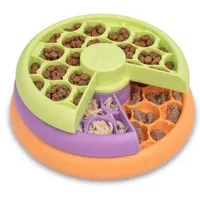Healthy weight loss for cats: A vet's guide
Our vet shares her top tips for promoting weight loss for cats.
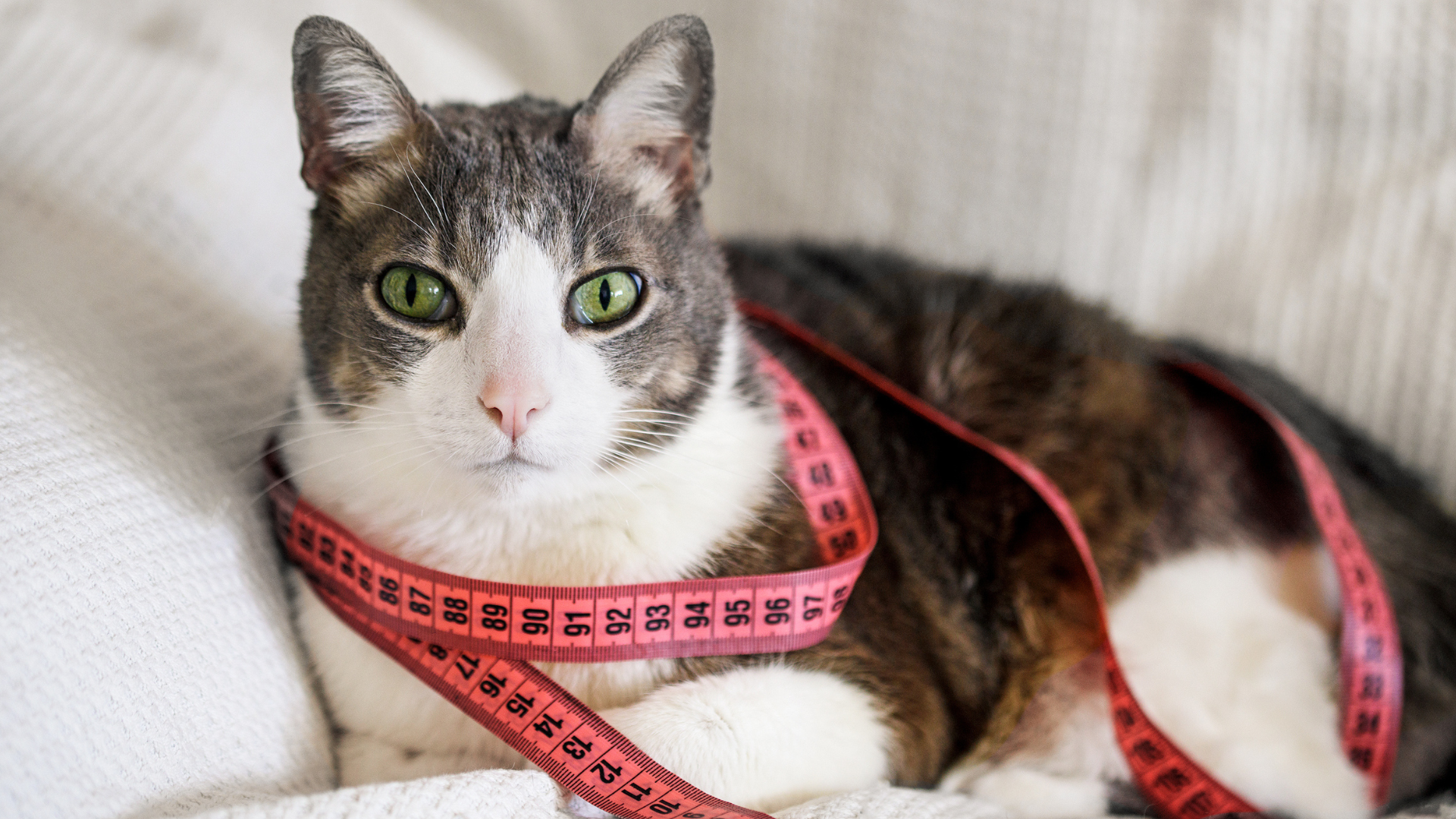
If you want to learn about weight loss for cats, then you’ve come to the right place. Overweight cats have more chances of developing health conditions, like diabetes and joint pain, so it’s important to know how to help them.
If it were up to our fur friends, they’d eat the best cat food all day long, and as pet parents, we know how hard it can be to say no to them. However, if your cat gets to an unhealthy weight, it can cause damaging effects on their health and wellbeing, so they’ll thank you for it in the long run!
Indoor cats might find it trickier to stay active, so it’s a good idea to play with them regularly with the best cat toys and try out some cat exercises.
If you’re concerned about your cat’s weight, we’ve called in vet Dr. Catherine Barnette to help. Below, she’s revealed how to get an obese cat to lose weight and the diet they should follow. We’ve also asked feline behaviorist Amanda Campion for her advice:
How can I help my obese cat lose weight?
Cats, like humans, maintain a healthy weight when they burn as many calories as they consume. When a cat consumes excess calories, they gain weight; over time, continued weight gain can lead to obesity. Therefore, obesity has two potential causes: excessive food intake or inadequate exercise. In many cats, obesity occurs because of a combination of these two factors.
Think about feral or stray cats: they spend much of their day chasing and hunting down small prey. This burns a lot of energy, and the payoff is small, hard to digest, food rewards. This balance between calorie intake and expenditures tends to keep feral cats on the lean side. Contrast this to a typical indoor house cat: most pet cats spend their days laying on the couch or a warm lap, periodically walking over to the food bowl to ingest large meals of highly-digestible cat food. When viewed through this lens, it’s not hard to see why obesity is so common in cats!
To help your cat lose weight, you will need a two-pronged approach: decrease your cat’s caloric intake, while simultaneously increasing your cat’s activity level. If you're feeling unsure of their requirements, read our feature that answers, 'How much should I feed my cat?'
Get the best advice, tips and top tech for your beloved Pets
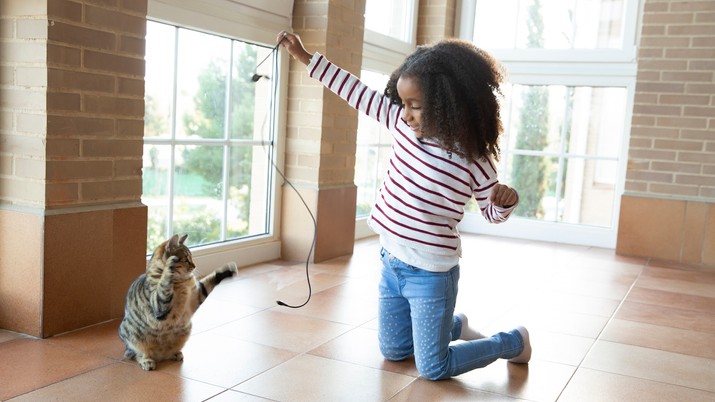
Before starting a weight-loss program for your cat, visit your vet. Your vet will perform a thorough physical exam, and may also recommend laboratory tests. This workup can help rule out underlying conditions that might contribute to your cat’s excess weight, while also highlighting issues that need to be considered when changing your pet’s diet.
Your vet can also recommend a safe rate of weight loss in your cat. Overweight or obese cats who suddenly stop eating, or have their calories severely restricted, are prone to a condition known as hepatic lipidosis. When a cat suddenly stops obtaining adequate calories from food and shifts to mobilizing large amounts of fat, this fat can harm the liver and even lead to death. By following your vet’s guidelines, you can ensure that your cat loses weight in a healthy way that decreases the risk of hepatic lipidosis.
Diet for healthy weight loss in cats
To help your cat lose weight, you need to decrease your cat’s calorie consumption by putting them on a “diet.” Just like we humans adopt specific dietary changes to aid in weight loss, our cats will benefit from the same approach. There are two primary ways to do this, but using both strategies simultaneously can help maximize your chances of success.
First, consider transitioning your cat to a food that is less calorie-dense. Unless your cat is on a medical diet, prescribed by your vet, you can consider an over-the-counter weight loss cat food. These foods, available in both dry and canned formulations, are designed to be less calorie-dense than traditional adult cat food. Prescription weight-loss diets (which are even more calorie-restricted) are available through your vet. Weight loss diets are designed to fill your cat up, while providing fewer calories than a normal diet. This should mean your cat doesn’t go hungry on his weight-loss regime.

If you decide to change your cat’s food, talk to your veterinarian for help determining the best food for your cat. Also, consider these recommendations for best dry cat foods and best wet cat food.
Five tips to improve your cat’s diet can also help you take a more balanced view of your cat’s nutrition.
If you’re hesitant to change your cat’s food, you can also decrease the quantity of food that your cat eats on a daily basis. If your cat is currently fed free-choice (from a bowl that you keep full at all times), start by feeding your cat a measured quantity of food each day. Gradually decreasing your cat’s food intake (while avoiding any sudden, drastic changes) can help promote healthy weight loss.
Try putting their food into the best cat puzzle feeder or a snuffle mat. Amanda says: “Encourage your cat to engage in foraging gameplay rather than feeding from a bowl - this taps into the innate hunting mindset of the cat.”
To make them look forward to smaller mouse-sized meals, Amanda recommends offering toys before feeding as part of a play sequence.
Catstages Kitty Lickin' Layers
This puzzle feeder will encourage your cat to eat slower, whilst activating their natural foraging instincts and providing mental stimulation. It holds one cup of wet food or half a cup of dry food and the materials are BPA-free.
How much should I feed my cat to lose weight?
The recommendations on the cat food label are often a good starting point. You should be aiming to feed for your cat’s ideal body weight rather than for his current body weight, and measuring cat’s food out accurately. If your cat is drastically over his optimum body weight though, talk to your vet to minimize the risk of hepatic lipidosis.
You can divide your cat’s recommended amount of food into multiple small meals per day or feed one large meal per day; either approach will work, as it will still be the same total amount of food given in a 24-hour period. There is evidence that once-daily feeding may be more effective at promoting weight loss in cats, though more studies are needed. Also, many vets agree that your cat is less likely to beg for food and treats between meals if they have multiple smaller meals a day.
Every cat has a different metabolism. While label recommendations are a good starting point, it may take some trial and error to find the food quantity that helps promote weight loss for your cat. Weigh your cat at the beginning of your weight loss program; if your cat has not lost any weight after several weeks, further decrease the food quantity by 10%.
Finally, ensure your cat is not receiving additional calories from treats or table food. If you give your cat treats, they should form a very small portion of the diet and your cat’s normal food intake will need to be decreased accordingly. Make sure all of your family is on board with this, and no one is breaking the rules.
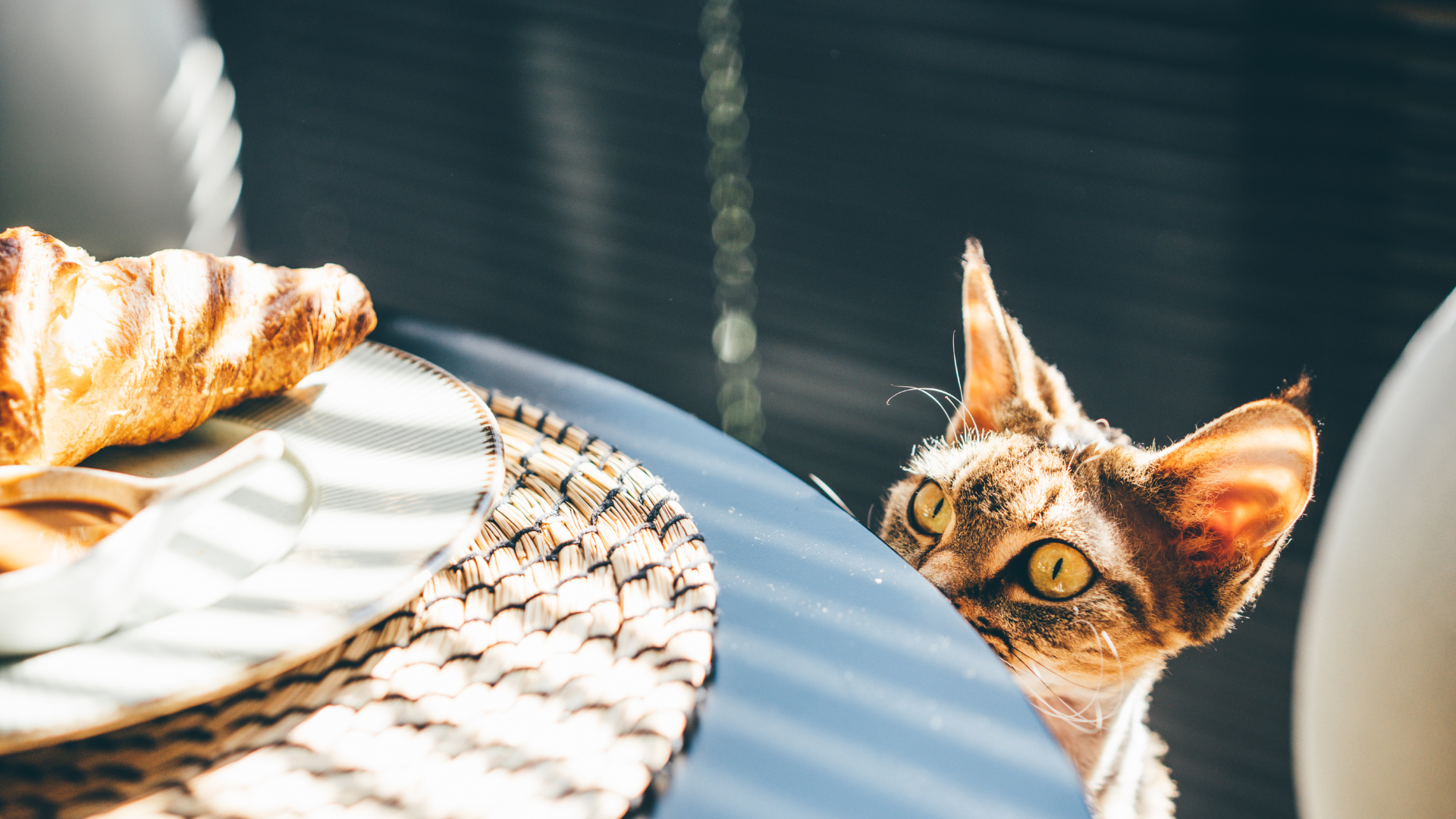
Help your cat burn more energy
Indoor cats typically lead sedentary lives. Fortunately, there are several things you can do to increase your cat’s activity level.
Make a conscious effort to play with your cat. Every cat has different preferences, but the best interactive cat toys can all provide interactive play that encourages your cat to run, jump and be more active. Many cats will have short bursts of energy, rather than long sustained play sessions; this is normal and replicates their ancestors’ hunting behaviors.
Much of a wild cat's time is spent watching and stalking, with only quick bursts of running to catch prey. What you want to be doing is to keep encouraging more of these short bursts of activity in your pet, rather than getting disheartened by unrealistic expectations of your cat doing long periods of exercise.
Consider easy changes that can promote physical activity. If you have a two-story home, you may want to place your cat’s favorite bed or his food bowl, on the second story of the house to encourage him to climb the stairs more frequently. If you do move the food bowl, however, be sure that your cat finds it and is eating on a daily basis, to prevent hepatic lipidosis! Also, avoid making the litter box inaccessible, because this may encourage inappropriate elimination.
You can also make changes to your cat’s feeding routine, to mimic natural hunting behavior. Doc and Phoebe’s Indoor Hunting Feeder and other puzzle feeders require mental and physical engagement from your cat. By replacing passive meals at the food bowl with active feeding toys, you can increase your cat’s energy expenditures.

What’s wrong with being overweight?
Given the large number of overweight cats in our society, it’s easy to view feline obesity as a normal or natural condition. Unfortunately, that couldn’t be farther from the truth! Extra body weight predisposes your cat to several serious health problems, and can have negative effects on your cat’s overall quality of life. Talk to a veterinarian for help before embarking on your cat’s weight loss regime, to ensure that things are kept as safe as possible.
Being overweight is more than just a cosmetic issue. Here are just a few health conditions that are more common in overweight cats –
- Diabetes Mellitus – a condition in which the body does not respond normally to insulin, leading to symptoms like excessive thirst, excessive urination, and other internal organ dysfunction
- Osteoarthritis – a painful, degenerative condition which is associated with obesity, due to obesity’s increased pressure on the joints and inflammatory factors released from fatty tissue
- Feline Lower Urinary Tract Disease (FLUTD) – FLUTD can cause symptoms like discomfort urinating and toileting in inappropriate places, and is often seen more in overweight cats
- Cancer – as with people, being overweight can predispose cats to certain types of cancer
- Cardiovascular issues – extra weight can lead to more breathing difficulties and extra strain on the heart. Overweight animals may find exercise difficult and brachycephalic breeds (with narrow nostrils and other breathing abnormalities) will struggle the most
- Poor grooming – difficulty reaching all areas of the body can lead to matted, unkempt, and dirty fur
Concerned your fur friend is off their food and losing too much weight? Our vet shares the top things to check when your cat’s not eating and how you can stimulate their appetite. Wondering how to tell if your kitten is overweight? This vet's guide has the answer.
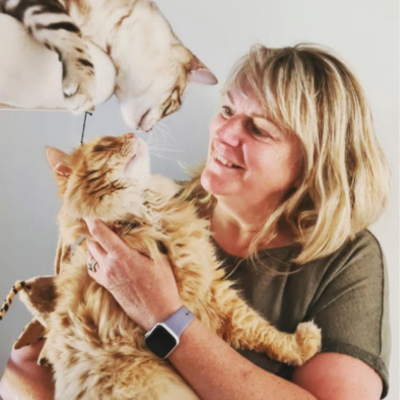
Practicing as a full clinical animal behaviorist member, Amanda's passion is cats. She helps to correct all their quirky unwanted issues, anxiety, and stresses that can manifest from time to time. Amanda has worked alongside charities for many years, helping to rehabilitate cats from surrender and euthanasia. She previously had her own cattery, fostering and rehabilitating traumatized shelter cats, enabling them to go in to have happy lives with their new owners. She loves engaging with the cat caregivers and deciphering what problems they are having, as well as using her detective skills to find out what the cats’ problems are. As a CAB, she assists with a wide range of feline behaviors but the most rewarding to her is to see a previously traumatized or anxious cat start to trust again which is life-changing for the cat.
Dr. Barnette is a graduate of the University of Florida, where she received both her B.S. in Zoology and her Doctor of Veterinary Medicine (DVM). She has 15 years of clinical experience as a small animal veterinarian, treating dogs, cats, and occasional exotic patients. She now works as a freelance veterinary writer, creating educational content for veterinarians, veterinary team members, and dedicated pet owners. Dr. Barnette lives in southwest Florida with her husband and daughter (plus two cats, a dog, and a rescued dove!) and enjoys kayaking, biking, and hiking. Learn more about Dr. Barnette at www.linkedin.com/in/catherinebarnette.
- Amanda CampionClinical Feline Behaviorist
- Megan MilsteadStaff Writer
